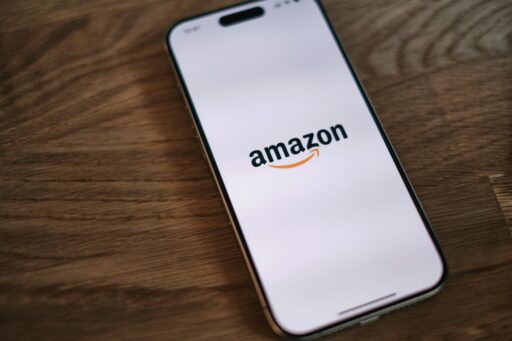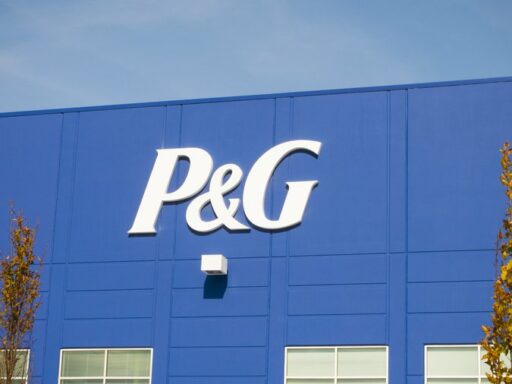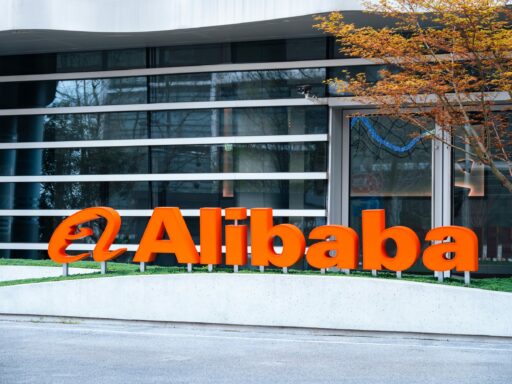Amazon, one of the world’s largest e-commerce and cloud computing companies, plays a massive role in global supply chains, digital infrastructure, and consumer behavior. With over 1.5 million employees and operations in more than 100 countries, Amazon’s environmental footprint is significant. However, the company has also become a major force in corporate sustainability, committing to ambitious climate action targets and transformative green logistics programs.
Launched in 2019, Amazon’s Climate Pledge commits the company to reach net-zero carbon emissions by 2040—a full decade ahead of the Paris Agreement’s timeline. The company’s sustainability strategy spans renewable energy, electric vehicles, sustainable packaging, circular economy initiatives, and decarbonization of its cloud services under Amazon Web Services (AWS). Despite criticism for the scale of its impact, Amazon is actively investing billions of dollars to decarbonize its operations and supply chain.
- Amazon emitted 71.3 million metric tons of CO₂e in 2022, a 0.4% decrease year-over-year despite growing net sales by 9%.
- As of 2023, Amazon is the largest corporate purchaser of renewable energy globally, powering over 90% of operations with renewables.
- Over 100,000 custom electric delivery vehicles (EDVs) from Rivian are being deployed across its logistics fleet.
Source: https://sustainability.aboutamazon.com/
Sustainability Strategy and Goals
Amazon’s sustainability strategy is guided by its Climate Pledge, a commitment to reach net-zero carbon emissions across Scope 1, 2, and 3 by 2040. The pledge includes investments in renewable energy, electric transportation, energy-efficient data centers, and carbon removal technologies. Amazon also requires suppliers to share sustainability performance data and to align with climate science.
To reduce Scope 1 and 2 emissions, Amazon is scaling renewable energy procurement, green building designs, and fleet electrification. For Scope 3, which covers product manufacturing, third-party logistics, and cloud usage, the company works with vendors to improve lifecycle emissions and transition toward sustainable materials.
Packaging sustainability is another cornerstone. The Frustration-Free Packaging (FFP) program has eliminated over 2 million tons of packaging material since 2015 and promotes recyclable, plastic-free, and right-sized packaging. AWS, Amazon’s cloud business, is also on track to power its infrastructure with 100% renewable energy by 2025.
- Amazon aims for 100% renewable energy across all global operations by 2025.
- The company plans to make 50% of all shipments net-zero carbon by 2030 through its “Shipment Zero” initiative.
- Over 300 signatories have joined the Amazon-led Climate Pledge, covering sectors from retail to manufacturing.
Source: https://sustainability.aboutamazon.com/environment/the-climate-pledge
Key Sustainability Innovations and Technologies
Amazon is advancing sustainability through innovation in logistics, cloud infrastructure, and packaging. The company’s partnership with Rivian led to the creation of a custom electric delivery van, designed for efficiency and driver safety. Over 10,000 Rivian vans are on the road in the U.S., with a target of 100,000 by 2030.
In AWS, Amazon leverages machine learning and artificial intelligence to improve data center energy efficiency and cooling performance. AWS customers can track their own carbon footprint via the Customer Carbon Footprint Tool, promoting transparency and accountability in cloud computing.
Amazon also operates sustainable fulfillment centers that use advanced robotics, energy-efficient HVAC systems, and rooftop solar installations. Additionally, the company is investing in alternative materials, such as compostable mailers and bio-based packaging adhesives.
- Amazon has launched Rivian EDVs in over 1,800 cities, helping reduce delivery emissions.
- The company has built or planned over 400 renewable energy projects, totaling more than 20 GW of capacity.
- AWS customers saved millions of kWh through optimized workloads and serverless computing in 2022.
Source: https://sustainability.aboutamazon.com/environment/transportation
Measurable Impacts
Despite its large footprint, Amazon has reported some reductions and efficiency gains. In 2022, the company reported a 0.4% decrease in gross carbon emissions, even while overall sales and services grew. This decoupling is attributed to improvements in energy intensity, logistics optimization, and renewable energy expansion.
Amazon has reached 90% renewable energy use in its operations as of 2023, keeping it on track to hit its 100% target by 2025. It has reduced per-unit packaging weight by 41% since 2015 and eliminated more than 1 million tons of plastic packaging, thanks to programs like FFP and Ships in Own Container (SIOC).
The Right Now Climate Fund, a $100 million initiative, supports global nature-based solutions. Projects in the Amazon rainforest and the U.S. Appalachians are already helping protect biodiversity and sequester carbon.
- Amazon’s carbon intensity fell by 2% in 2022, reflecting improved operational efficiency.
- 1 million+ tons of plastic have been avoided through packaging reduction initiatives.
- 20+ GW of clean energy capacity makes Amazon the top global corporate buyer of renewables.
Source: https://sustainability.aboutamazon.com/environment/energy
Challenges and Areas for Improvement
Amazon’s vast global operations present unique sustainability challenges. A primary concern is the scale and complexity of its Scope 3 emissions, including emissions from third-party sellers, product manufacturing, and customer use. While Amazon has disclosed Scope 3 estimates, critics argue it needs more transparency and faster reductions in these indirect emissions.
Another challenge is packaging waste, especially from smaller items that require protective but often non-recyclable materials. Although Amazon is working on circular packaging systems, single-use materials persist in regions with underdeveloped recycling infrastructure.
The rebound effect of e-commerce and next-day delivery—where consumers order more frequently due to convenience—also risks negating emissions savings from electric vehicles and renewable energy. Changing consumer behavior remains difficult to influence.
- Scope 3 emissions make up over 75% of Amazon’s total footprint and are growing due to third-party logistics and marketplace sales.
- Overpackaging and material inconsistency remain barriers in certain regions.
- Critics cite a lack of comprehensive product lifecycle disclosures compared to sustainability leaders in retail.
Source: https://www.greenpeace.org/usa/news/amazon-must-address-hidden-emissions/
Future Plans and Long-Term Goals
Amazon’s path to net-zero includes scaling electric delivery fleets, decarbonizing its data centers, and expanding its circular economy programs. The company plans to invest more in carbon removal technologies, such as reforestation, biochar, and direct air capture, via its Climate Pledge Fund.
Packaging innovation will continue through bio-based alternatives, reusable containers, and global expansion of Frustration-Free Packaging. Amazon is also investing in sustainable aviation fuel (SAF) to decarbonize air freight and working with suppliers to improve emissions reporting and compliance.
By 2040, Amazon aims to transform its entire global logistics network—including maritime, air, and last-mile delivery—to a low-carbon system, supported by AI-driven optimization and renewable energy integration.
- Amazon aims for 100,000 electric delivery vans on the road by 2030.
- AWS will be powered by 100% renewable energy by 2025.
- The company is investing over $2 billion through the Climate Pledge Fund into decarbonization startups and climate tech.
Source: https://sustainability.aboutamazon.com/environment/the-climate-pledge
Comparisons to Industry Competitors
Amazon’s sustainability strategy is ambitious, though comparisons with competitors reveal areas of strength and vulnerability.
Microsoft: Aims to be carbon negative by 2030, with a strong focus on Scope 3 emissions, water positivity, and ecosystem restoration.
Source: https://www.microsoft.com/en-us/sustainability
Apple: Achieved carbon neutrality for all corporate operations and targets full product lifecycle neutrality by 2030. Apple leads in sustainable materials and circularity.
Source: https://www.apple.com/environment/
Google: Runs on 100% renewable electricity and aims for 24/7 carbon-free energy by 2030. Strong performance in transparent reporting and AI for climate.
Source: https://sustainability.google/
- Microsoft reports detailed Scope 3 emissions and invests heavily in carbon removal.
- Apple uses 100% recycled aluminum in many products and has phased out plastic from retail packaging.
- Google powers all cloud regions with renewables and discloses real-time energy mix.
Our Thoughts
Amazon is taking serious steps toward sustainability with large-scale investments in renewables, electrification, and packaging reform, and it deserves credit for leading through the Climate Pledge. Its ability to decouple emissions from business growth shows progress. However, the complexity of its global supply chain and dominance in consumer goods and logistics mean it must go further and faster, particularly on Scope 3 emissions and e-waste reduction.
The company’s technological edge and financial power give it a unique opportunity to drive systemic change in retail, cloud computing, and transportation. With stronger transparency, supplier engagement, and customer-facing sustainability features, Amazon could become a benchmark for climate leadership in the digital economy.






